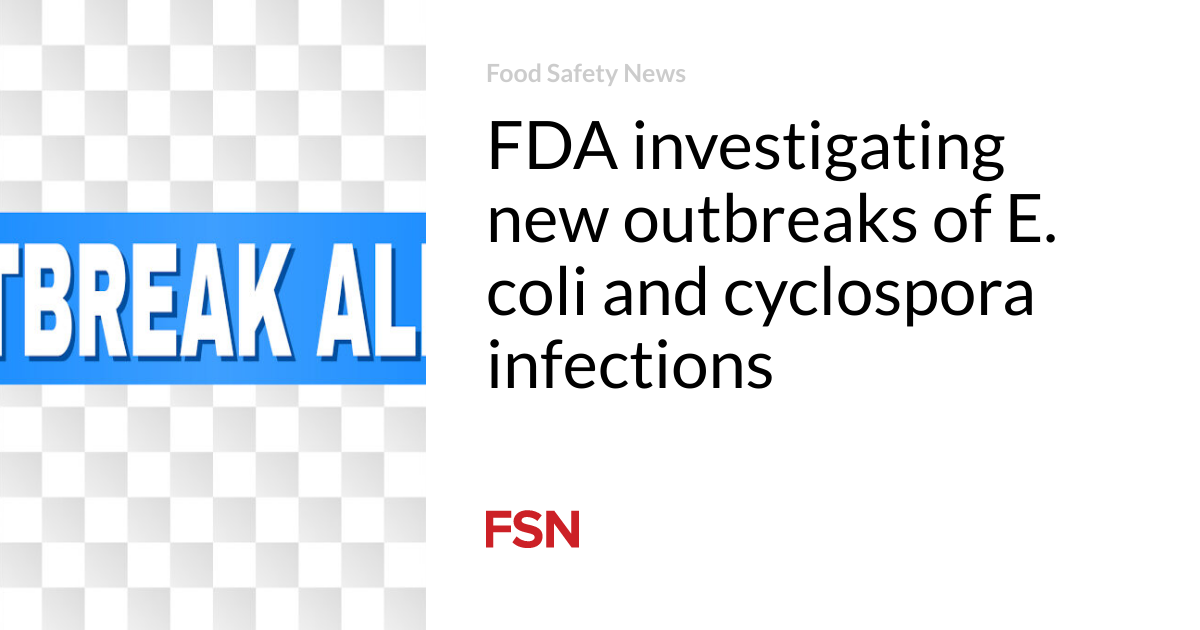Infection
FDA investigating new outbreaks of E. coli and cyclospora infections
Federal officials are investigating two new foodborne illness outbreaks.
One of the outbreaks involves E. coli and has sickened at least 13 people, according to the Food and Drug Administration. The FDA has initiated traceback efforts but has not reported what food or foods are being traced. The FDA has not released any patient information, including where the patients live.
The other new outbreak involves the cyclospora parasite and has sickened at least 39 people. The FDA and state investigators have initiated sample collection and testing, but the FDA has not reported what is being tested. The FDA reports that it has begun traceback efforts but has not reported what food or foods it is tracing. The agency has not released any patient information.
Cyclospora parasites are often associated with various types of fresh produce, including basil, cilantro, mesclun lettuce, raspberries, and snow peas. Food safety experts say washing products does not remove the parasite.
The new cyclospora outbreak is separate from three other ongoing outbreaks traced to the parasite. The FDA has initiated traceback but has not reported what food or foods are being traced. Also, the FDA has begun sample collection and testing but it has not reported what is being tested.
For an outbreak of Cyclospora cayetanensis, the case count has increased from 43 to 68 patients in the past week. The FDA has initiated onsite inspections and has begun sample collection and analysis, However, the agency has not reported what location is being inspected or what food is being sampled. The FDA has not released any patient information, including where the patients live.
In a third outbreak of Cyclospora cayetanensis, the patient count has increased from from 118 to 121 since a week ago.
In a fourth outbreak from the Cyclospora parasite at least 210 people across 22 states have been sickened. Public health officials have not yet determined the source of the parasite.
Federal, state and local public health officials are investigating the outbreak, according to an update from the Centers for Disease Control and Prevention.
The CDC and the Food and Drug Administration have been tracking the outbreak since April 1. Additional infections could have started before that date.
Also, there are likely more than 210 people in the ongoing outbreak because of the lag time between when patients become ill and when confirmation testing can be completed and results filed with the CDC. Some sick people don’t seek medical attention, which also impacts the outbreak count. The parasite is killed by using antibiotics. Specific tests are required to diagnose Cyclospora infections, which can mimic other illnesses.
About Cyclospora
Anyone who has developed symptoms of Cyclospora infection, and has reason to believe they have been exposed to the parasite, should seek medical attention. Specific tests are required and antibiotics are used to fight the parasite.
Cyclospora infection can cause severe abdominal pain, watery diarrhea, nausea, vomiting, body aches, and fatigue. Symptoms can develop between two and 14 days after exposure. Though symptoms can be severe enough to send people to the hospital, it’s rare for people to die from Cyclospora infections.
Cyclospora is a type of protozoa, which is a tiny, single-celled organism. It is transmitted when people somehow ingest contaminated feces, typically through contaminated food or water. It can be spread only through human waste, unlike E. coli and salmonella, which can also be spread from microscopic amounts of animal fecal matter.

